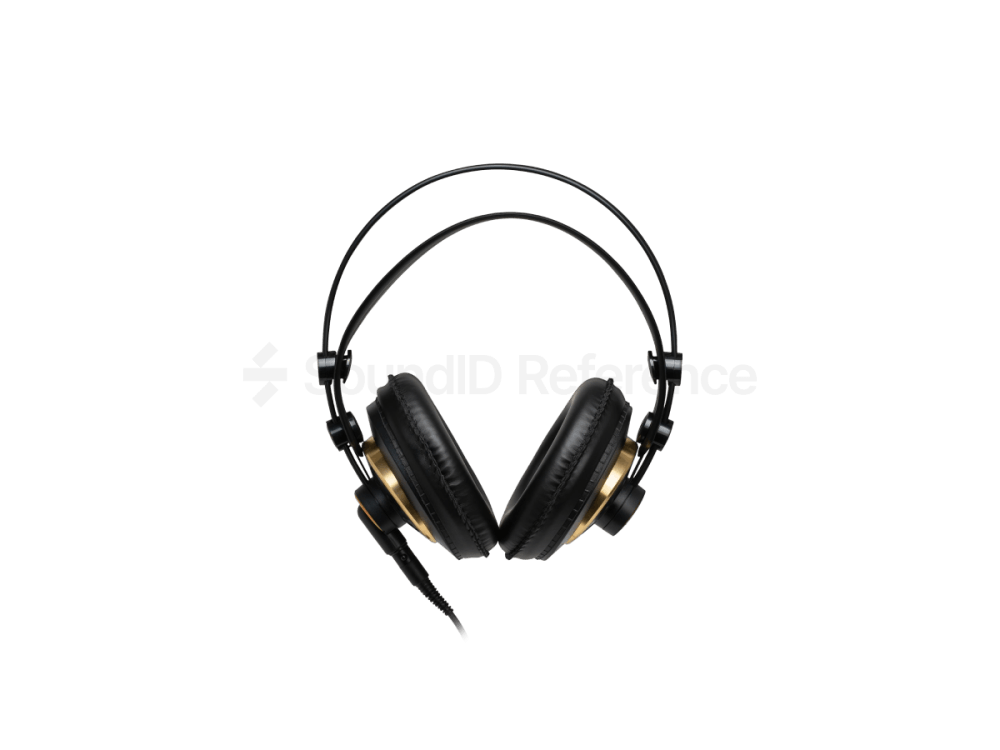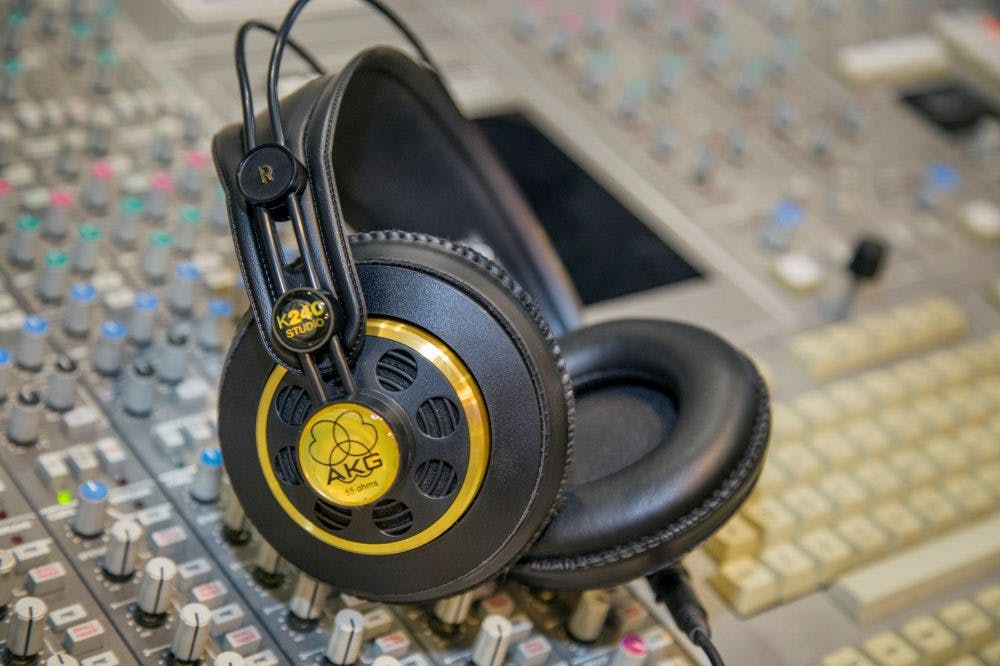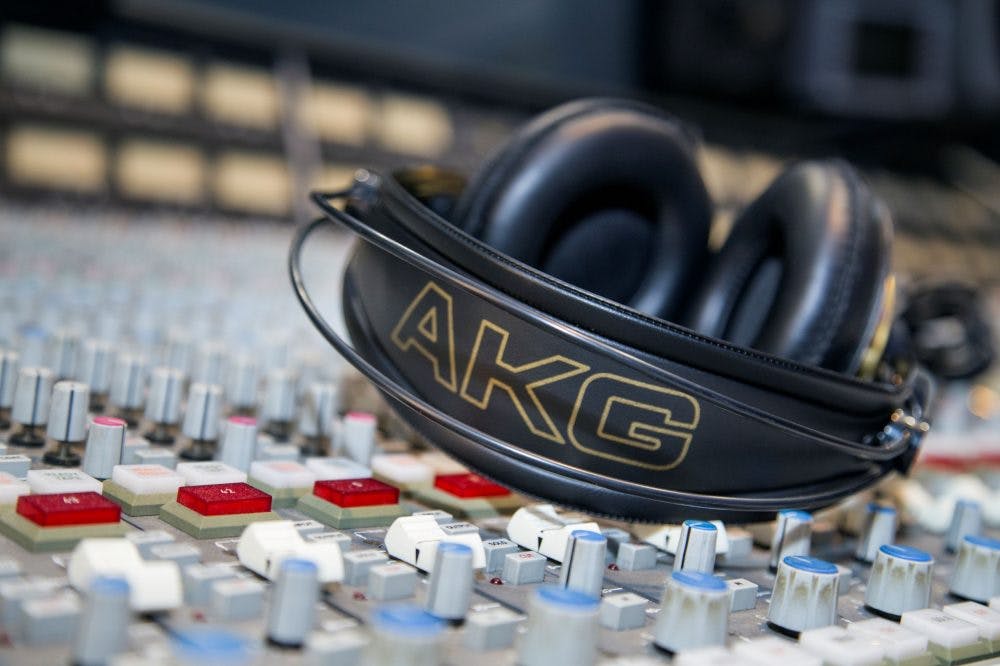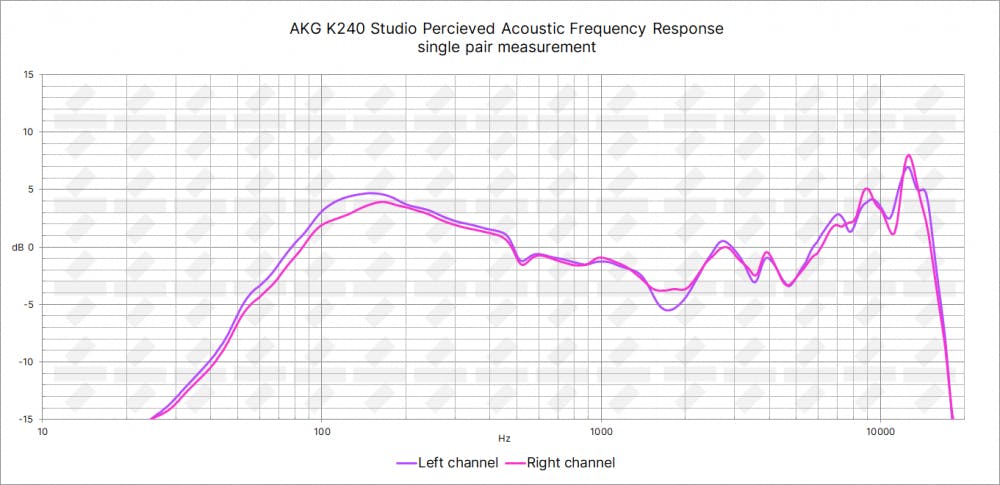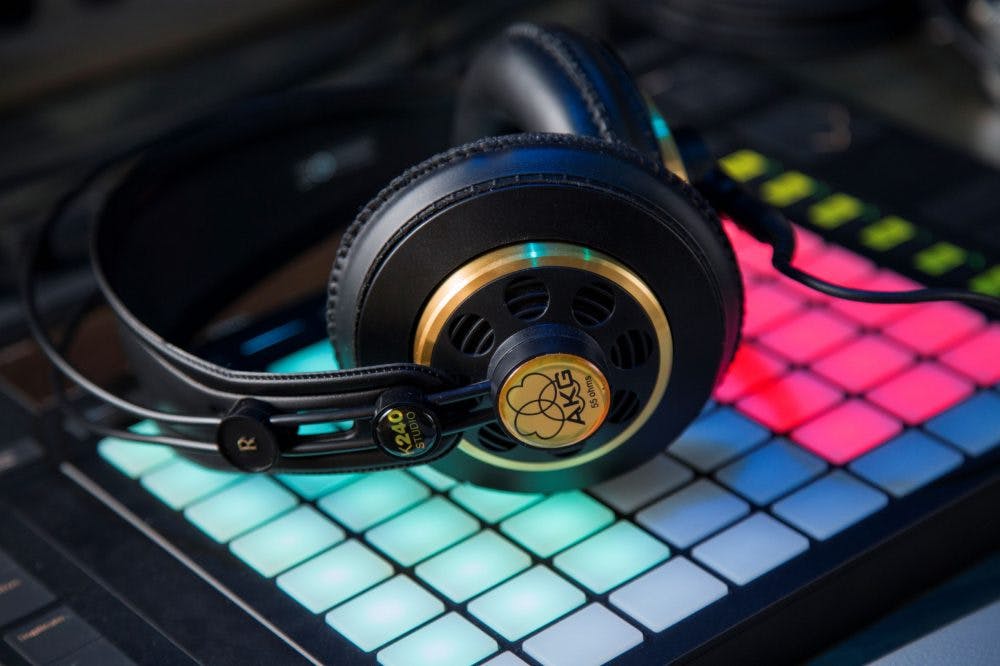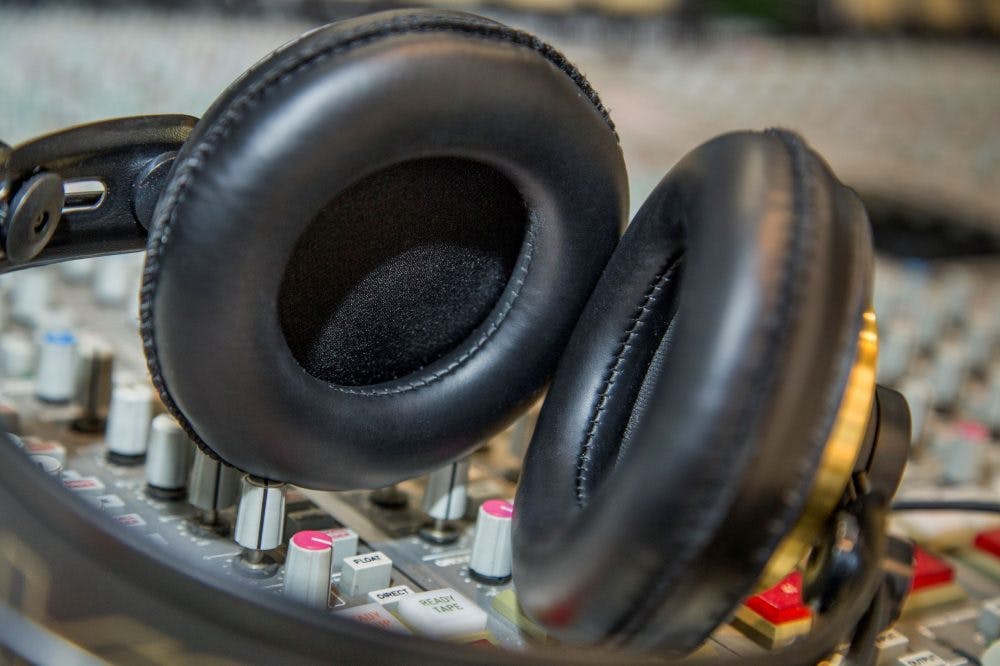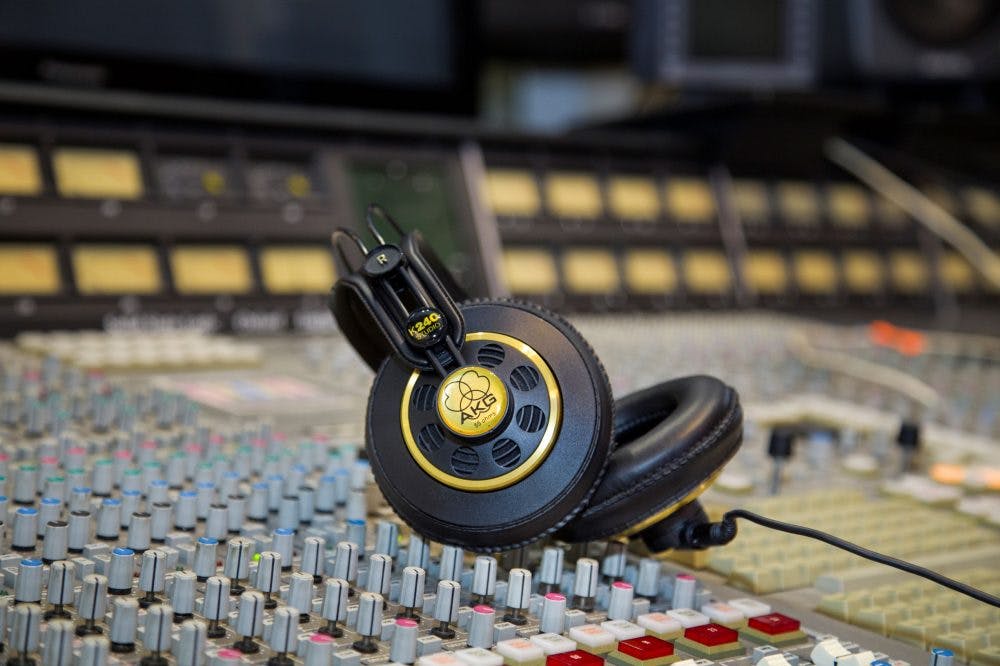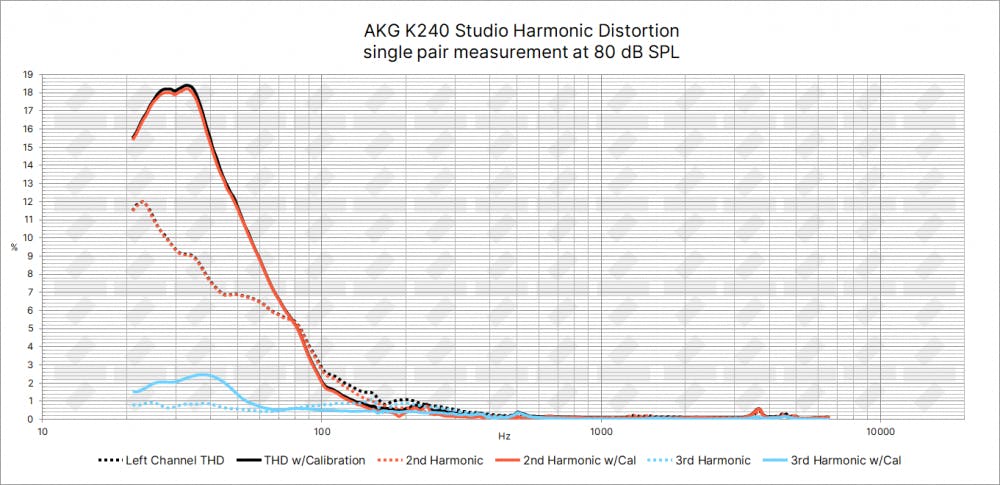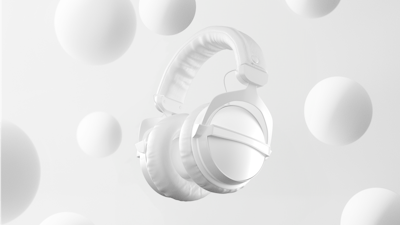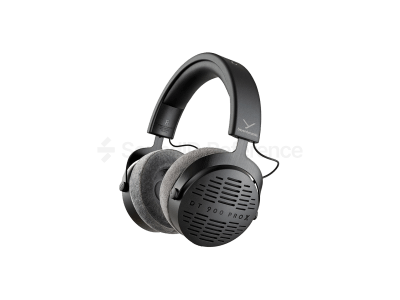No other headphone model has been copied more by other manufacturers than AKG K240 Studio. The iconic design can be traced back to the 1970s and it has its strengths, but music has changed quite a lot since then. Are the drivers 21st century ready? Is the build up to par with modern headphones?
- Good comfort for the price
- Detachable cable and replaceable ear pads help longevity
Pros list with SoundID Reference calibration
- Increased both low and high-end extension
- Neutral frequency response
- High THD in the sub bass
K240 Studios can be driven by a laptop to dangerously high volumes. However, Reference requires 15dB of safe headroom for this model, so when used with calibration, you’ll be better off plugging them in an audio interface or amp, or else you may run out of volume.
The design of AKG K240 Studio is largely the same as K240 Monitor, a classic headphone model released way back in 1975, making it even older than Sony MDR-7506 predecessor MDR-V6.
K240s are instantly recognizable as AKG headphones thanks to their trademark “hammock” style suspended headband that offers infinite adjustment instead of pre-set clicks found on most other designs. Apart from the retro styling and design, the age can be noticed in the feel of plastics used throughout the build which feels more industrial than the materials used in modern counterparts. A very welcome upgrade over K240 Monitor though is the detachable cable with the mini-XLR connector, this feature still is not as commonplace as it should be.
The build isn’t fragile but it doesn’t inspire confidence to throw them in a backpack and carry them around on a regular basis. Their place, as the name suggests, is in the studio, not on the road.
There are 3 main issues with the frequency response: the increase from 6kHz onwards makes the sound overly bright, the build-up in low mids introduces some muddiness, and perhaps the most notable issue is the absence of sub bass. Also, the high frequency cutoff point is relatively low, but that may be noticed only by the younger listeners. Overall, K240’s are far from being the worst-sounding studio headphones and deliver somewhat balanced sound, but there’s quite a lot to be gained by calibration. The highs and low-mids are evened out nicely by Reference, and it’s surprising that the drivers can handle the required bass boost at all, but more on that later.
For such an old design and relatively affordable price, the channel balance is remarkable! Imperfections are few and of little magnitude, and are nothing to worry about, as they will have virtually no perceivable impact on your work.
Similar to another age-old design – the MDR-7506 – comfort is one of the strengths of K240 Studio and in this regard, these are among the best headphones in the price segment. The headband applies pressure very evenly and should work well with many different head shapes and sizes. The ear pads will get sweaty and uncomfortable after extended use, but at this price point, it’s to be expected. Overall, AKG has done a very good job!
The current street price of €55 in Europe and $69 in the U.S. seems fair enough. If there were no issues with THD, it would be a very sweet deal, but regardless, it’s still a good one.
When compared to other headphones, we had to lengthen the Y-axis quite a bit to fit that massive 2nd harmonic distortion in the graph. With headphones as bass-light as K240 Studios, it’s typical that the low end boost applied by calibration stresses the drivers and leads to distortion increase. While the figures are rather dramatic, the real-world listening experience is nowhere near as compromised as with Shure SRH1840, since for these AKGs it’s the 2nd harmonic that receives most of the distortion, and as usual, this results in less detrimental artefacts. With that said, these still aren’t headphones for bass-heavy music producers and engineers. At lower volumes, sub-100Hz frequencies will not sound as clear as with more modern rivals, and with SPL increase a very audible coloring will rear its head. As in most cases, the rest of the spectrum has zero distortion issues.
If you’re not working with sub bass heavy content, you can get away with the high THD not causing any major issues, but if you do, better look elsewhere.
How accurate and consistent is the correction effect among different listeners?The adaptiveness, as with most AKG headphones, is not the greatest, meaning that frequency response may noticeably vary between listeners by about 3dB, in some cases more. The areas most affected by this are frequencies above 5kHz and below 100 Hz.
How much do they differ pair to pair in terms of frequency response?Same as with channel balance, pair-to-pair consistency is also impressive and surprising for an older model. High marks for AKG here.
Rating
Conclusion
While most of the K240 Studio’s more modern rivals do not suffer from the distortion the way these classic AKGs do, few can compete with its long-session comfort. Not everyone requires a pristine sub-bass response though, so trading that for better comfort may be an option worth considering, especially if your budget is limited. They’re not perfect, but at this price no one expects them to be. Perhaps even after all these years, there’s still a place for these humble old AKGs.
For more information about AKG headphones, please read our other reviews – AKG K371, AKG K712 Pro, and AKG K612.
Continue to discover our top recommended PRO studio headphones in our Top 24 list.
Final Rating
Calibration Enabled
Calibration
